As you are all probably aware Liverpool could potentially achieve one of the greatest feats in football this season by winning the quadruple. They have already secured the Carabao Cup and are closely chasing the Premier League, FA Cup and UEFA Champions League.
If they are to achieve this, their ability to maximize their set pieces will have played a significant factor. The importance of set pieces in football is finally getting the recognition it deserves with the role of set-piece coaches now more established, with clubs such as Chelsea, Manchester United and Aston Villa all having a specialist coach. The importance of set pieces will vary from source to source but set-piece goals roughly account for around 30% of goals, so ensuring your set-piece strategy is effective and well thought out is paramount. Liverpool is a club who are always at the forefront of innovation, and they were one of the first clubs to employ a throw-in coach in Thomas Gronnemark, so the fact they are one of the best teams at attacking set-pieces is not a surprise.
This tactical analysis and set-piece analysis will delve deeper into why they are so effective at corners, looking at how they choose to attack them and the principles which make them one of the deadliest sides in Europe from corners.
So far this season in the Premier League Liverpool and Manchester City lead the way with 15 set-piece goals each. Liverpool also has the second-highest set-piece XG with 13.7, only bettered by Brentford whose set-piece strategy we did an analysis of earlier in the year. Finally, they have the highest number of shots generated from set-pieces with 166.
Their set-pieces are not only effective in the league but also in the UEFA Champions League where they have scored 5 set pieces goals in the tournament this season. Liverpool has been one of the top performers in set pieces for a couple of seasons now, despite not being the tallest team they have a well-thought-out strategy and execute their set-pieces with precision. This is certainly aided by having players Like Trent Alexander-Arnold and Andy Robertson delivering the ball and the likes of Virgil Van Dijk and Ibrahim Konate attacking the ball, but this shouldn’t take away from their consistent brilliance at corners.
Outswinging attacking corners deep into the box
If you have watched Liverpool in recent weeks, you will have noticed they have scored corners in big moments, the FA cup semi-final first goal against Manchester City and two goals against Benfica in the UEFA Champions League quarter-final also. These goals were achieved using the same strategy, a strategy Liverpool has been utilizing for the majority of the season so far.
Liverpool has predominantly used an outswinging corner tactic so far this season. With these outswinging corners, they have chosen to place them deeper in the box and in the second half of the box, which will become more apparent in the examples. Our belief is this is a way of exploiting the hybrid marking system (now the most common form of defending corners) where most teams will defend the six-yard box in a zone and the rest of the team man mark. By using outswinging corners it naturally takes the ball away from the zone or opposition’s best aerial defenders, it is also harder for the defenders who defend the deeper area to win the aerial duel as they have been tracking the ball rather than watching the advancing attacker. Below we will take a look at two of these types of corners.
Just to start, we have highlighted two zones in the box, to show which area Liverpool has been looking to exploit in recent games. Liverpool has really been emphasizing the blue area of the box, this could be for two reasons. One defender and goalkeepers will naturally watch the ball as it comes in, this means in the blue area they cannot see the Liverpool runners as they are behind them creating more opportunities for Liverpool players to go undetected. Secondly, with this system, there is the potential for the gap between the back two defenders to be bigger than the rest of the zone, which will become apparent in the examples.
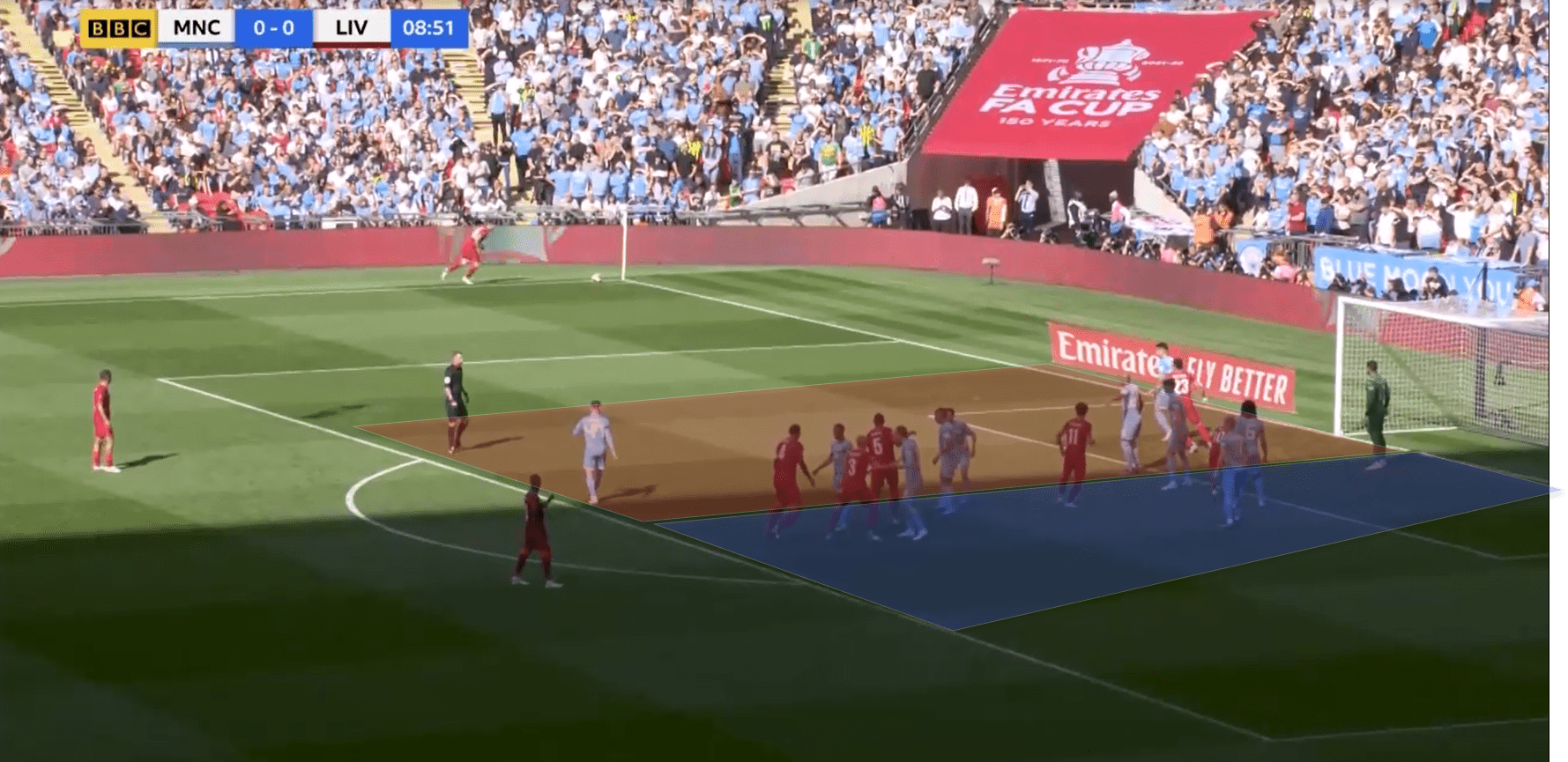
Now Liverpool almost always has six players in the box and two on the outside of the box. The way the six in the box set up will differ from game to game but usually, they have one in and around the keeper, three making runs from deep and two making runs nearer to goal.
Here Manchester City is defending in a hybrid system, with five defenders defending the 6-yard box and the rest picking up the Liverpool runners from deep.
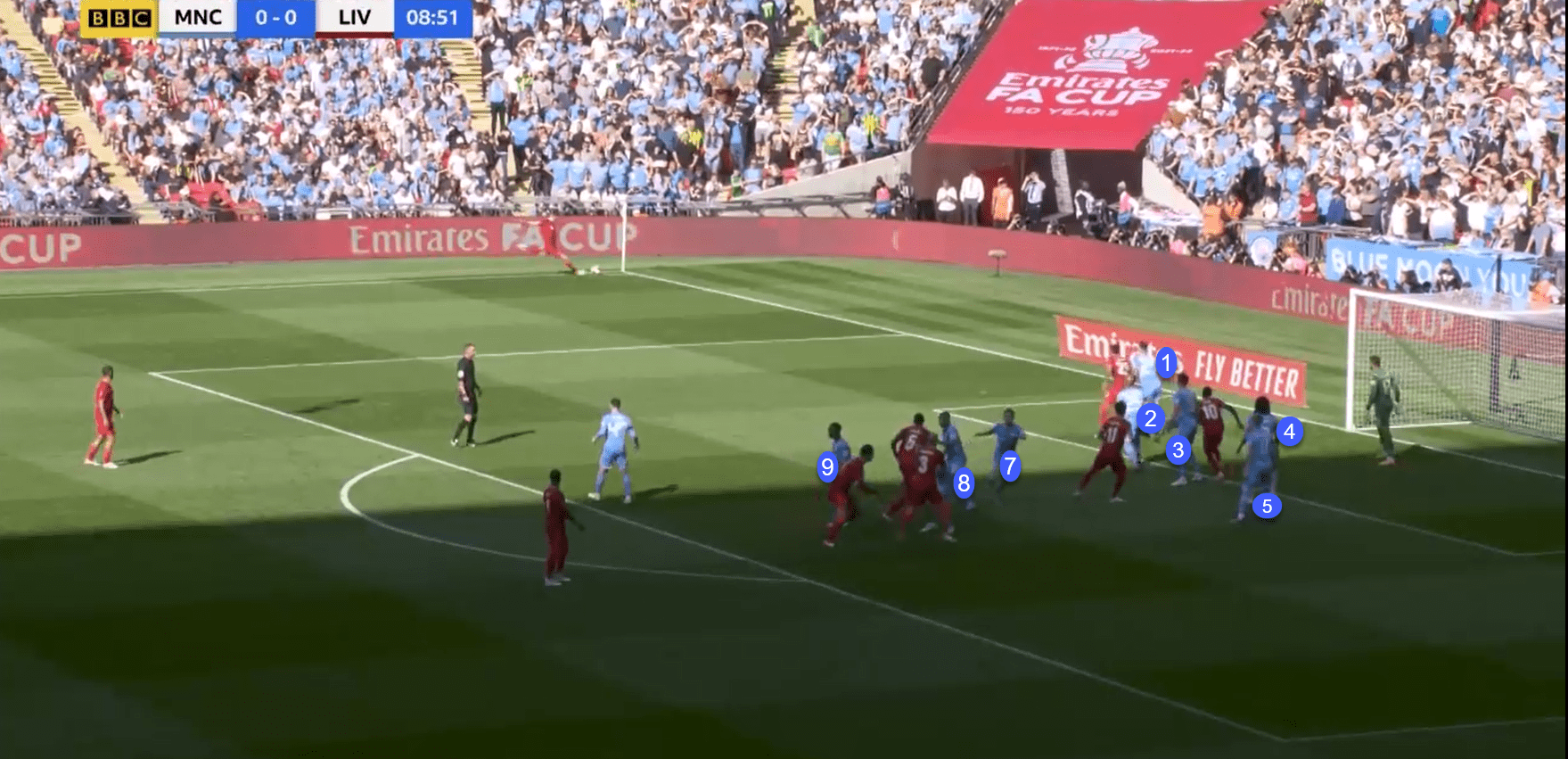
Now with this system, the principle is the defenders defending the 6-yard box attack the ball in an around them (Attacking their zone) and the markers prevent them from advancing. What Liverpool do so well here, is that Konate loses his man very well and Robertson places the just behind and away from Ake, who at no point while the ball is in the air notices Konate with his focus solely on the ball, reinforcing the thinking behind this strategy.
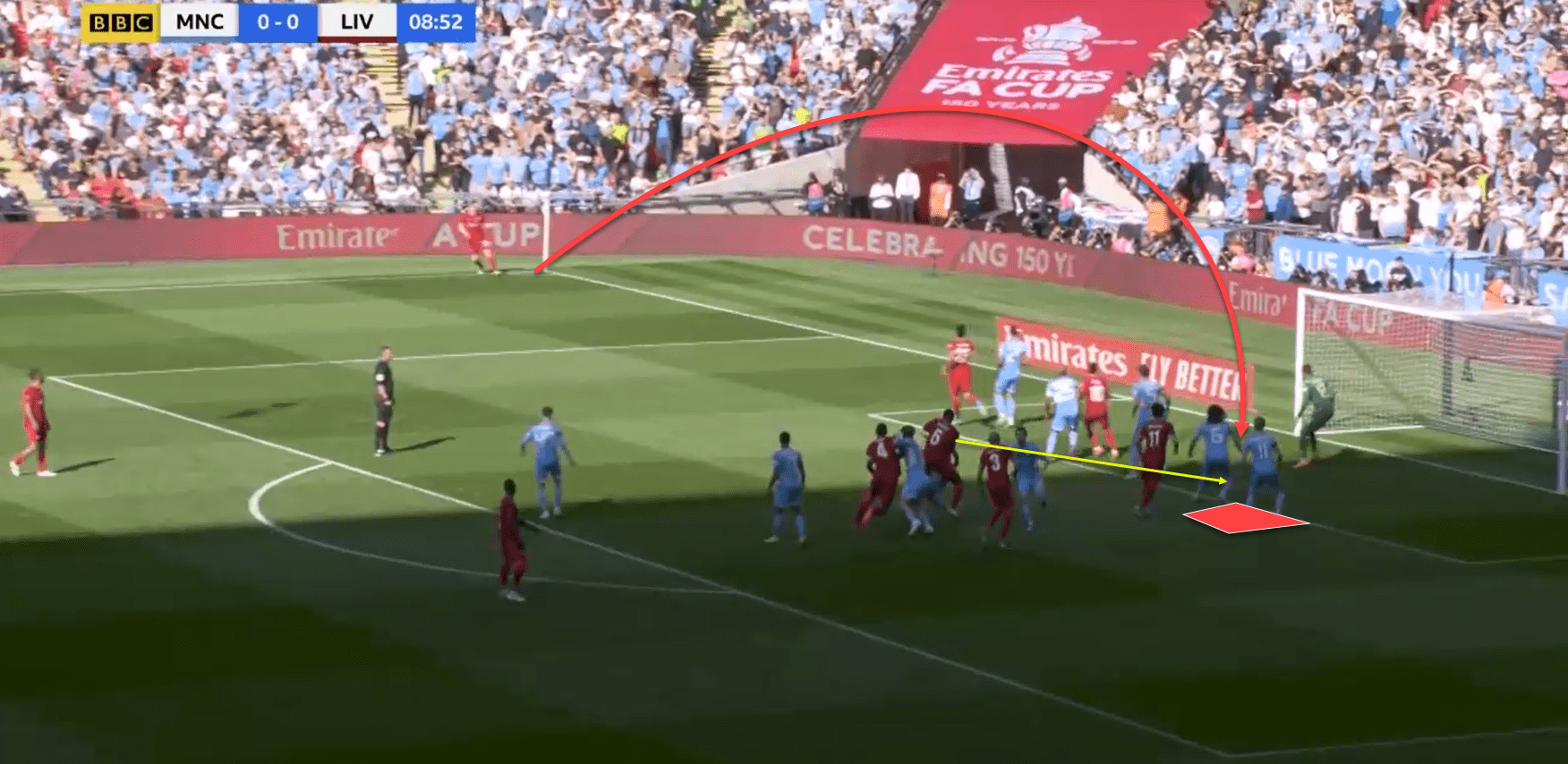
Plus, Konate has the momentum to simply rises above Ake to power his header home past Zak Steffen, who due to the nature of attacking the deeper zone, sees the ball and run of Konate much later.
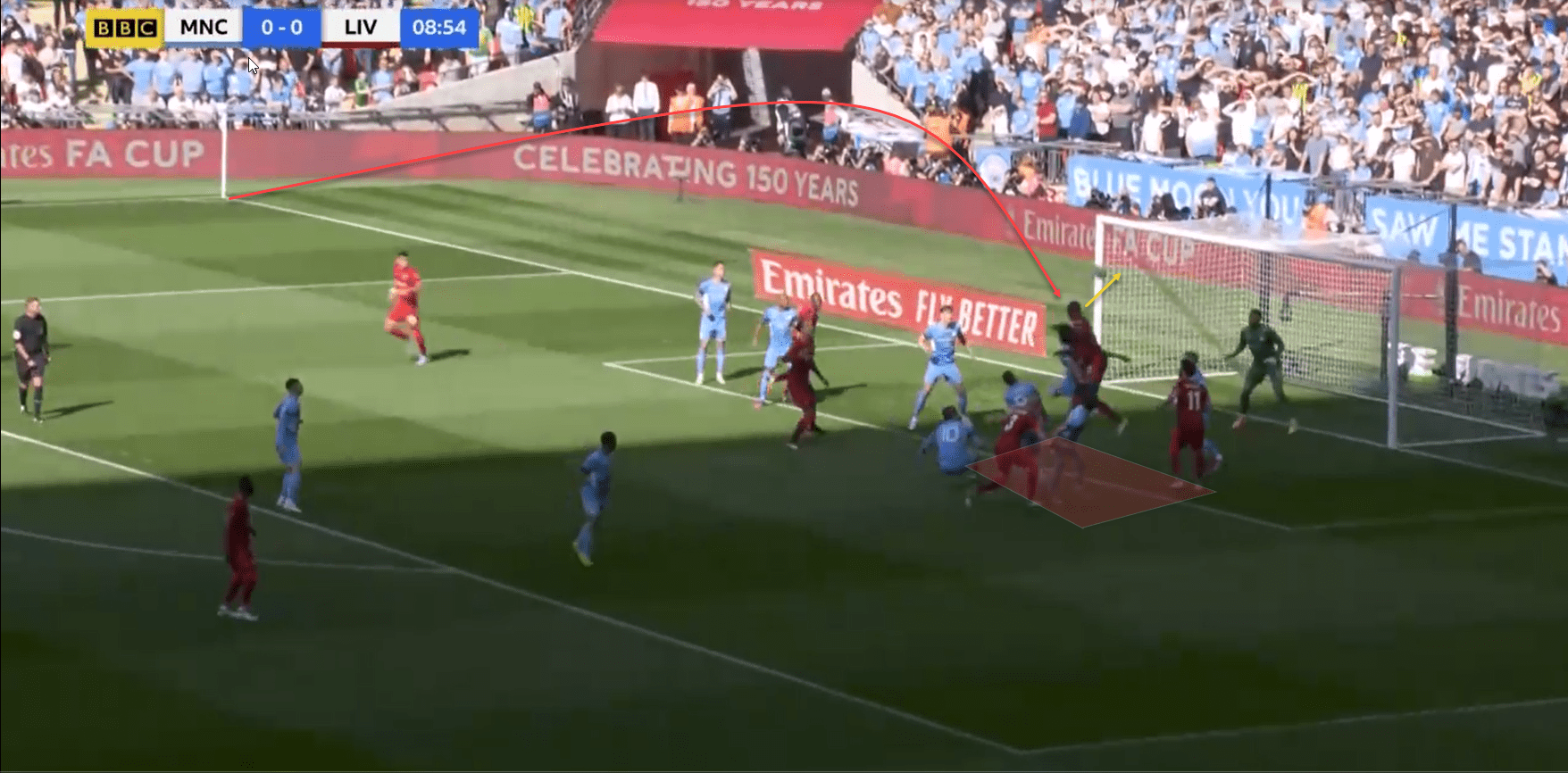
Liverpool has scored this exact same set-piece three times in recent weeks. With the other two goals against Benfica. Again, Liverpool is going to attack the deeper zone of the box using an outswinging corner. Benfica is defending in a zonal system with no one picking up the runners from deeper, the numbered players are the ones who will defend the 6-yard-box.
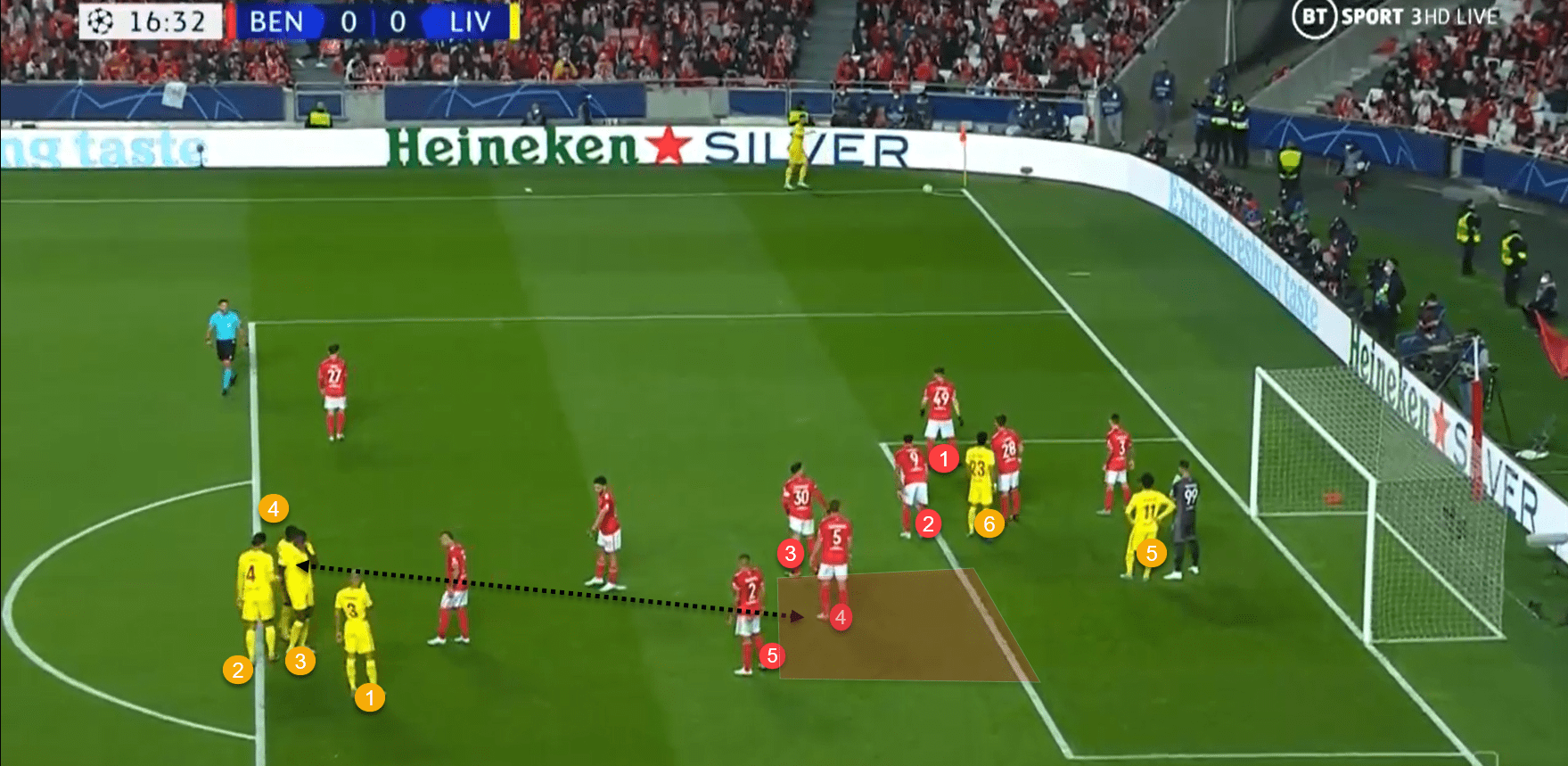
As the ball is delivered, Vertonghen (the nearest defender) watches the ball and gets caught out as Konate gets in between him and Gilberto and manages to power home, in an identical situation to the earlier goal against Manchester City. Again another great ball from Robertson to exploit that space.
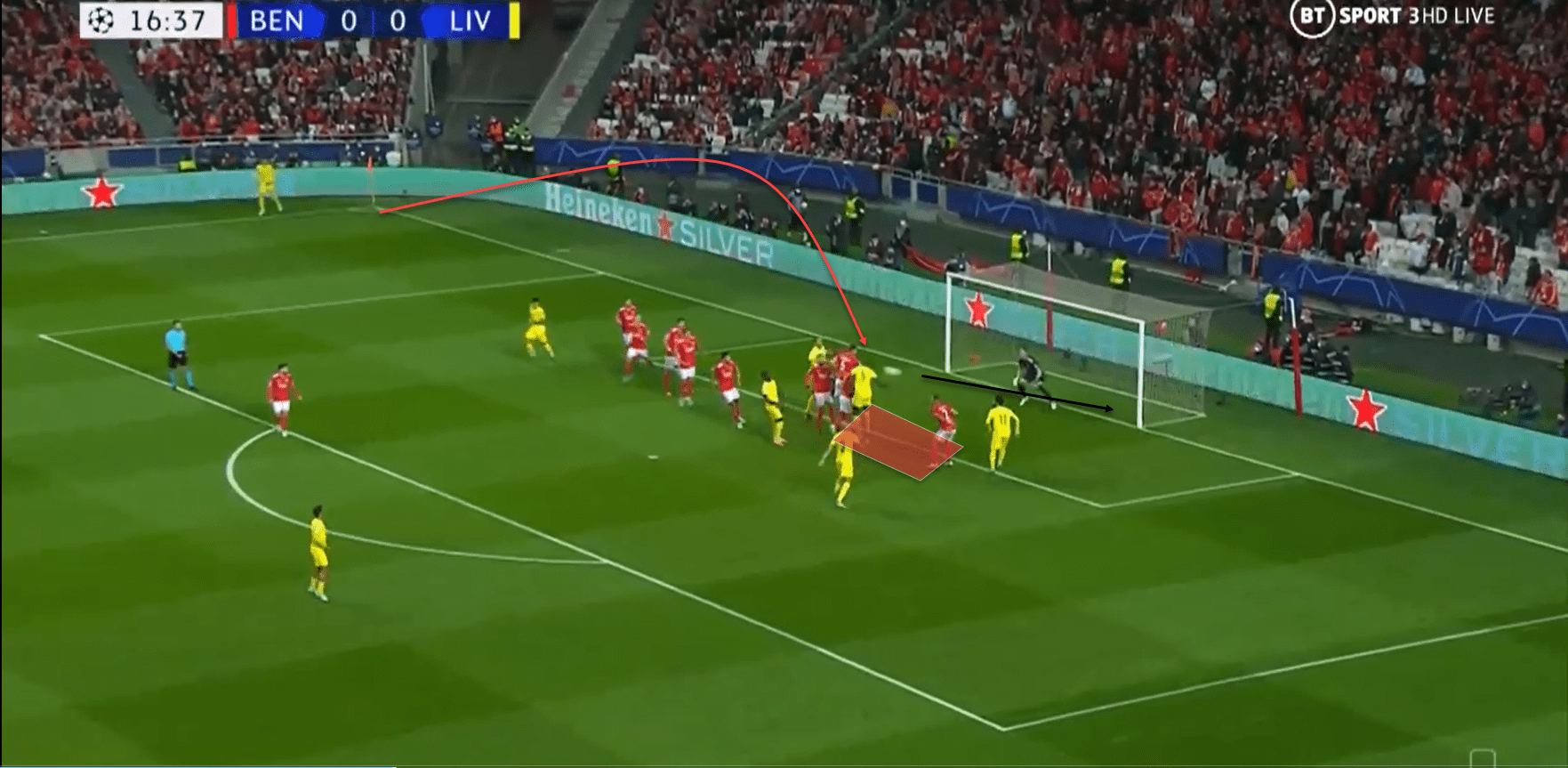
This was also replicated in the second leg at Anfield, showing the real emphasis Liverpool has placed on this type of corner this season.
Attacking the second balls
A lot of set-piece goals are not scored on the first contact but in fact the second ball, whether that be a rebound or someone attacking the loose ball. Something Liverpool does excellently. It is part of their set-up with runners always running to the ball and into areas and pockets in the box for the second ball. This is usually the role of the man on the keeper and the runners who make runs from nearer the goal, usually the roles assigned to the front three.
In this example, Leicester City is using a man-marking system, so Liverpool attackers are looking to lose their marker. Now Fabinho and Matip make runs deep while Van Dijk makes a run into the near post area highlighted below.
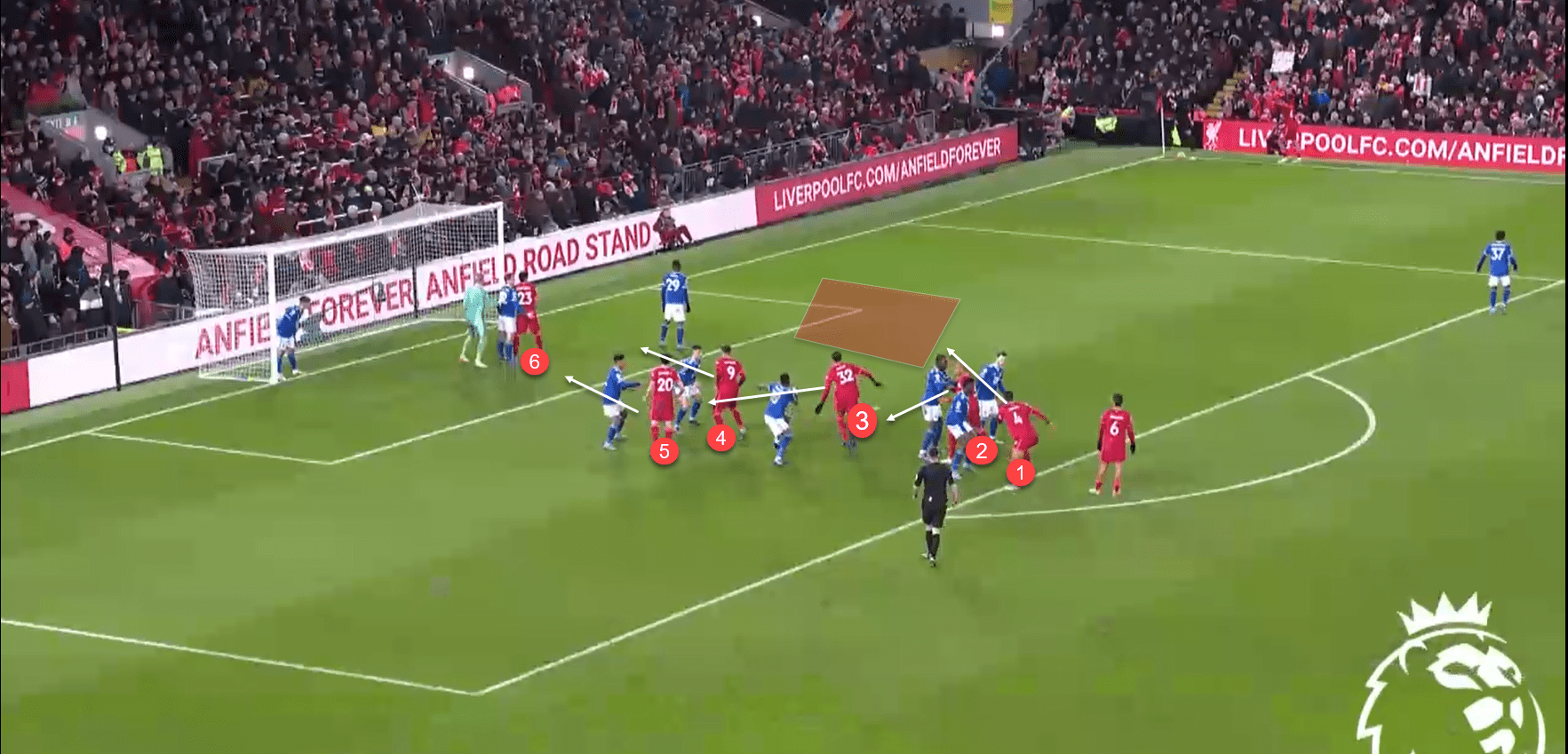
Jota and Firmino are too going to make runs, with Firmino attacking a bit deeper and Jota picking up a little pocket of space between the ball and the keeper. Now Van Dijk manages to lose James Maddison, his marker, and get a free header on goal, which forces a save out of Schmeichel. Resulting in Diogo Jota hammering home the rebound which falls right to him. But there are also three other Liverpool players who are looking to attack the second ball or rebound.
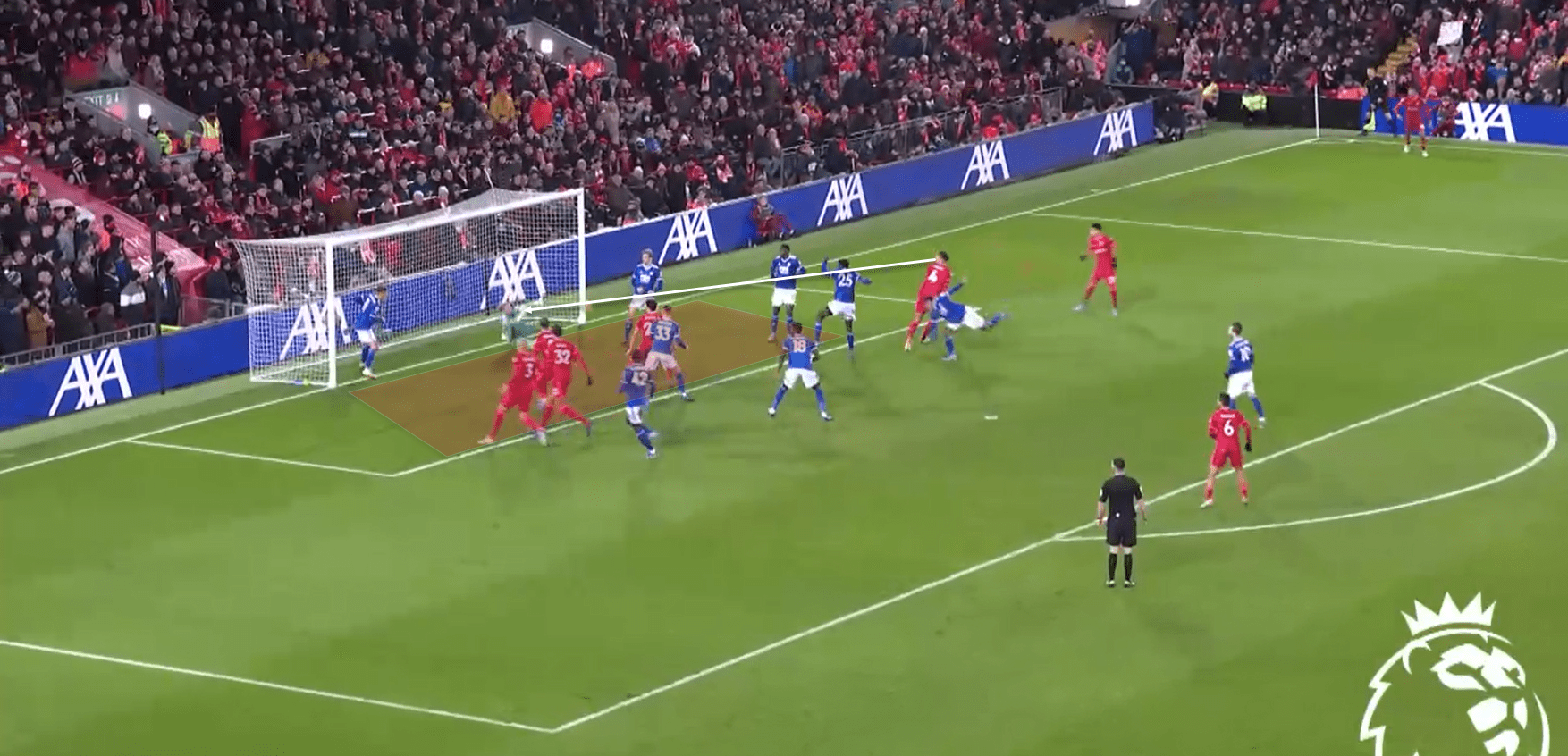
Something like this may seem so simple but yet so many players and teams fail to do it. It is one of the key reasons for Liverpool’s success this season from corners, with plenty more examples of Liverpool players scoring off the second ball at a corner. This is especially important when using outswinging corners.
In-game adjustments
Liverpool are a smart football club both on and off the field, one way they demonstrate this is their ability to identify opportunities and opposition weaknesses in-game and exploit them. For this article, we watched every Liverpool attacking corner this season and found a couple of examples where they changed their strategy in-game to exploit an opposition weakness. The first one we will show you is against Inter Milan in the UEFA Champions League. Below shows the first attacking corner of the game and Inter Milan is defending in a man system with two men spare at the near post area to attack any ball in there. Liverpool is still using their out swinging to the deeper area of the box strategy but note the big space at the front of the 6-yard box.
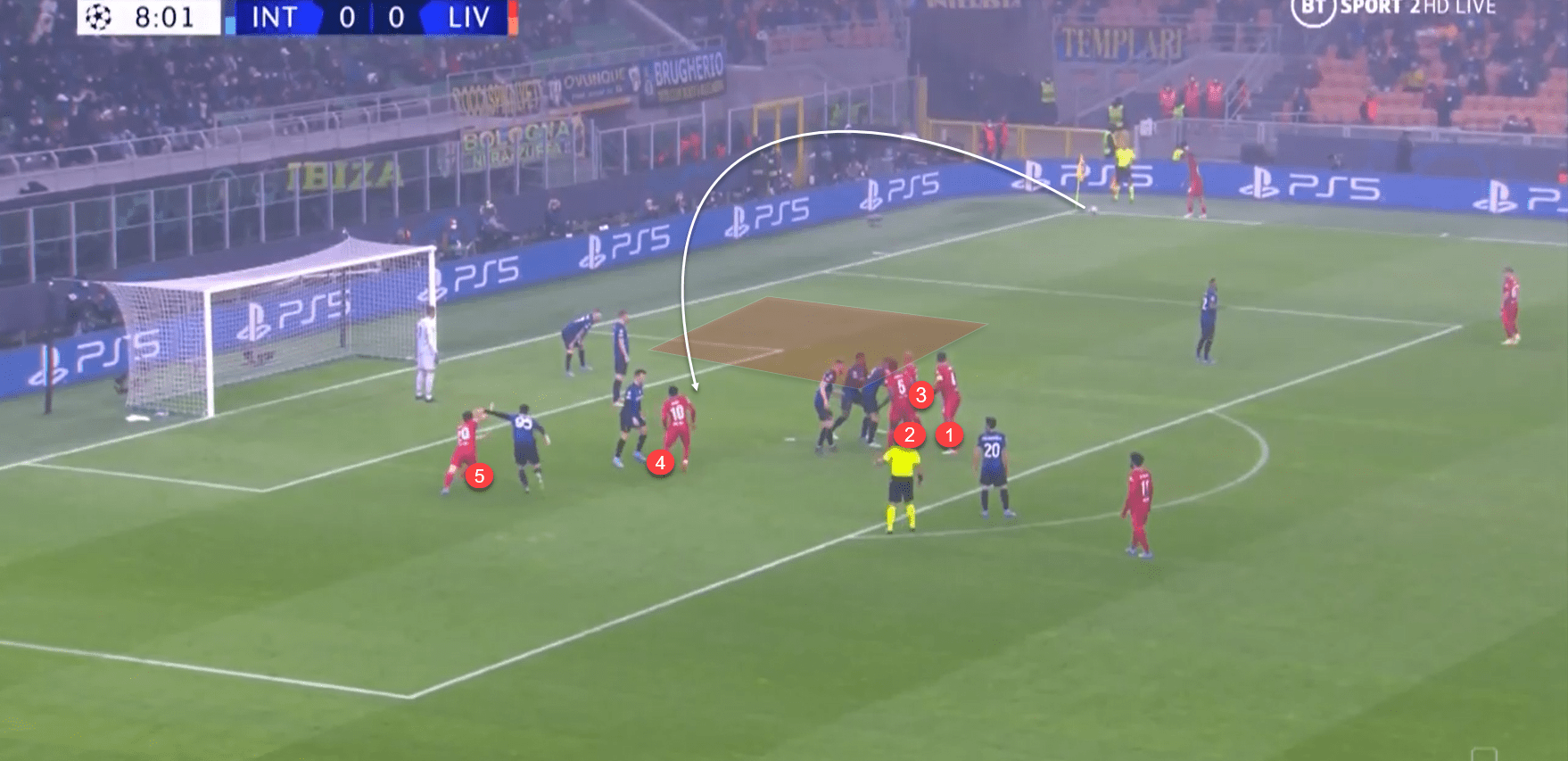
This space is there at every corner in the first half and in the second half, Liverpool notices this and tries to exploit it. They introduce an inswinging delivery looking to hit that highlighted area and in the 74th minute, they score from the exact space highlighted. This time it is an Andy Robertson inswinging delivery into the highlighted space, with Roberto Firmino making a darting run into the space and losing his man. Now Liverpool hasn’t really hit this space yet so the man whose job it is to mark it, switches off allowing Firmino manages to head home.
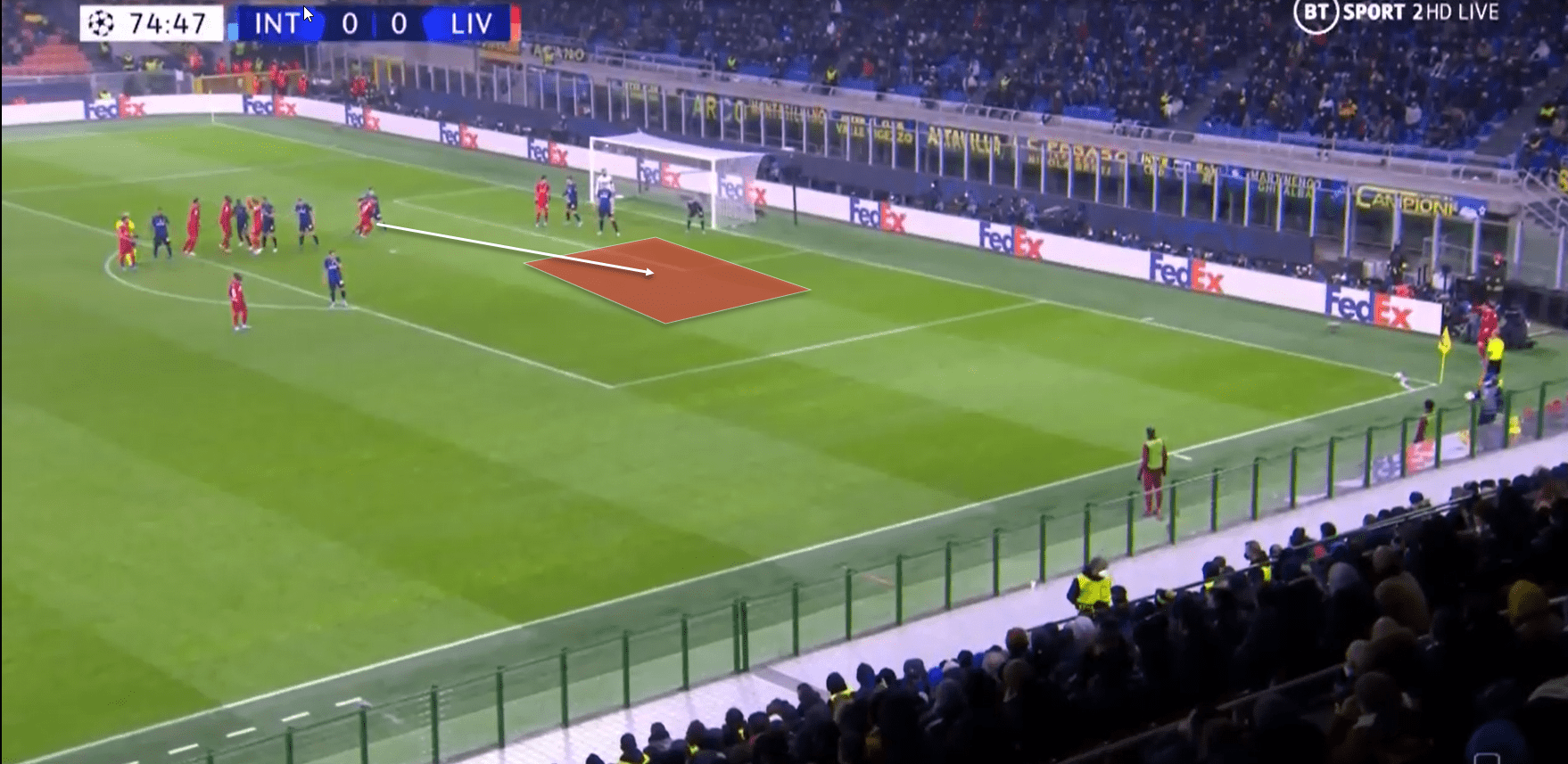
This was a similar situation to what Liverpool did against Burnley in the league. Burnley too is leaving a big space in the box, slightly further away from the goal than the space left by Inter Milan. Liverpool is again using their outswinging delivery to the deeper zone strategy at first.
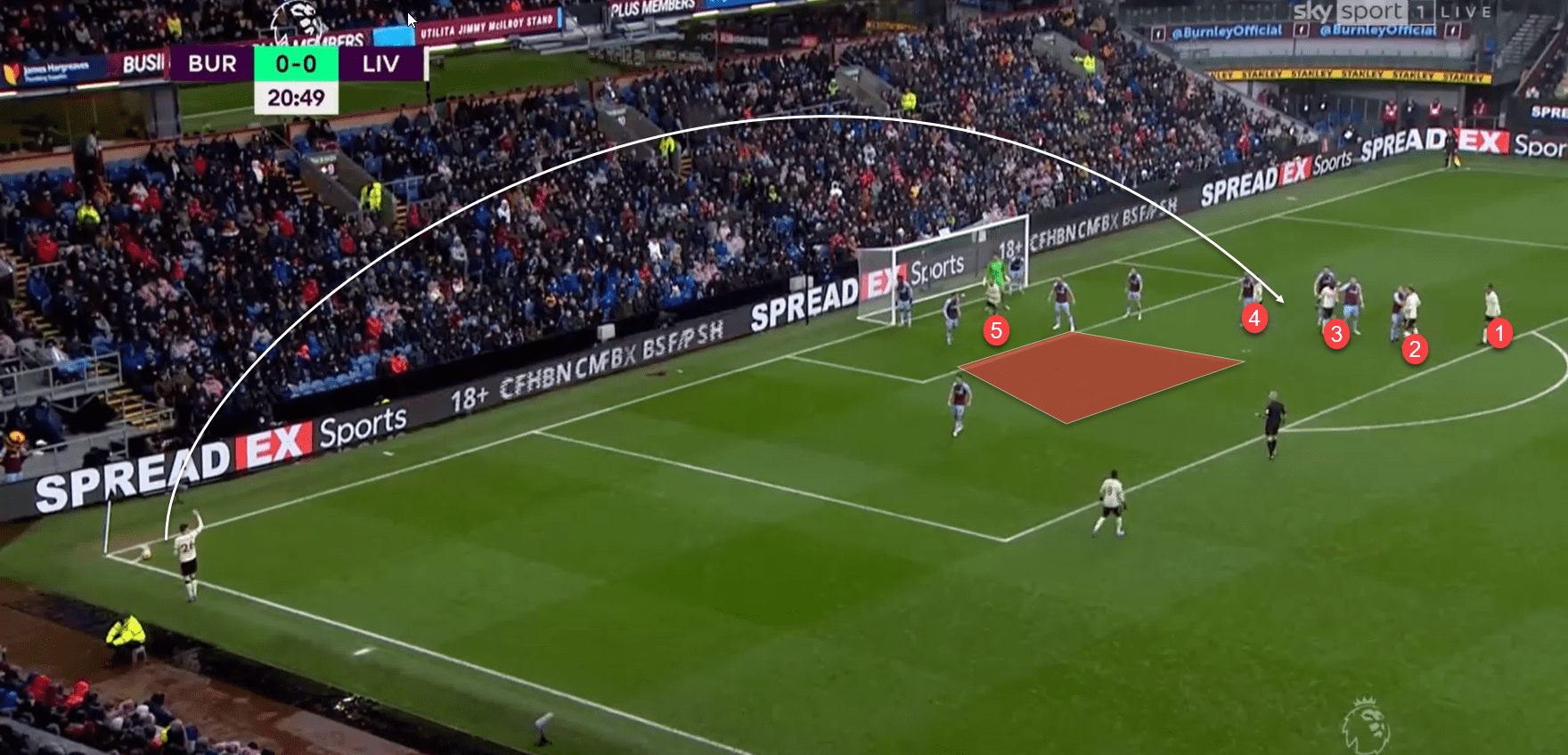
What is impressive about this, is they adjust in the same half. Maybe it is a message from the dugout, or the players have noticed it themselves. In the 40th minute from the same side, Alexander-Arnold takes an in-swinging corner exploiting that highlighted space with a darting run from Sadio Mane and flicking on a header which was met by Fabinho in front of Nick Pope to give Liverpool the lead.
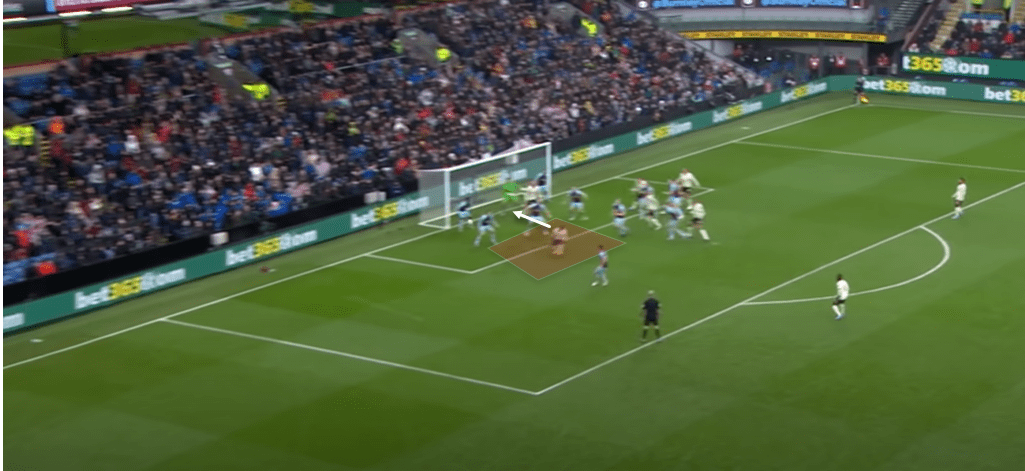
Perfectly combining their ability to adapt but also the importance of having players attack the second ball.
Conclusion
Liverpool has carefully constructed an intelligent and optimal corner strategy which has helped them deliver goals in some of the biggest moments. Their attention to detail is demonstrated by their ability to adapt in-game but also construct this strategy in the first place adjusting to the way many teams now defend corners. When aiming to achieve something like the quadruple, making sure you are efficient and effective in all aspects of your game is imperative and Liverpool is certainly that when it comes to attacking corners.






Comments